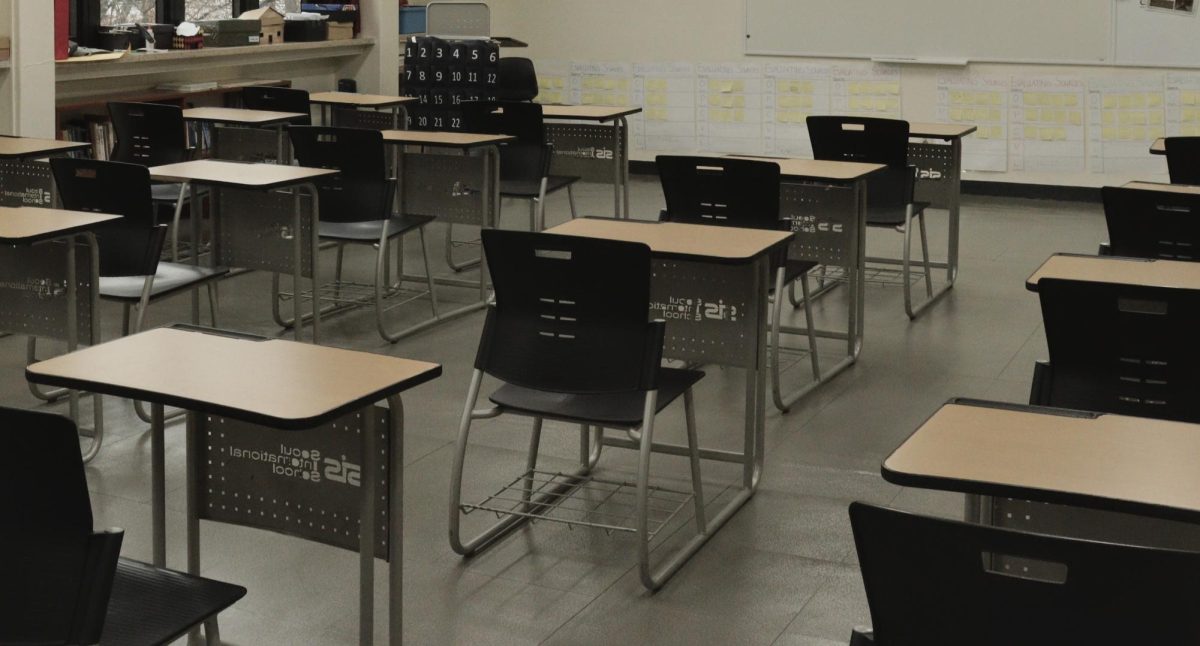Students worldwide are assigned a fixed seating arrangement as early as elementary school. For some, the experience of walking into the classroom to see the seating chart of random names beside theirs on the board can still be a terrifying start to the year. For others, it motivates them to avoid social distractions and prioritize their tasks.
This controversially discussed the topic of whether the classroom should incorporate assigned seats for students in the classes or get rid of them altogether has actively been debated as SIS takes on the second semester. This debate goes beyond the SIS community, as it has been an issue troubling education experts for years.
In elementary school, some teachers occasionally assign seating plans in the classroom as they believe that the students have now entered the age mature enough to be benefiting from assigned seats, where they have to leave their comfort zone. Students are young enough to easily adapt to the controlled and collected environment, while also being old enough to accept these conditions and experiences. However, other teachers allow students to freely choose where they want to encourage sociable behaviors.
Yet, avoiding social minefields of close peers, whose presence can in some ways negatively affect one’s academic performance, and focusing on strengthening social adaptability in unfamiliar educational settings only becomes increasingly relevant as students grow older. When students enter highschool more teachers implement randomly or even strategically selected seats. These educators believe that assigned seating is crucial for high school students, who are just a few steps away from adulthood and entering the real world, in learning to control their behaviors depending on the social situation they are set in. In a study conducted by Montana State University, students who were seated in the teacher-chosen seats performed better on the tests and overall improved more than the students seated in the self-chosen seats.
While it is true that emphasis on assigned seating grows common for a reason, the idea that it prevents students from gaining social skills required in adulthood is also arising. Those against assigned seats in the classroom believe that it prevents students from presenting their full academic potential as they are surrounded by a group of peers, people they often feel self-conscious or uneasy around. They argue that flexible seating would increase students’ engagement in class, especially for the introverted who would speak up more in a class of familiar environment. Furthermore, this flexibility would also allow academically enthusiastic students, who are able to focus during class and work together with maximum efficiency, to reciprocate the positive hardworking energy with the close people around them by setting good examples to other students and motivating each other to make best effort.
There are several positive and negative aspects of assigned seating that teachers take into consideration when deciding whether or not to implement assigned seating when the new semester approaches. In my opinion, these are the most important factors that should be included in the decision-making process: classroom dynamic, class purpose, and student’s comfort in the environment.
During the start of a semester it is crucial to set up a classroom dynamic that encourages positive behavior and collaboration for every student with their peers. This focus may urge a flexible seating, yet still occasionally include assigned seating in some spaces and activities to reinforce rules of the classroom in a free environment. The purpose of this is to prevent learning barriers since every student is different and learns in their own ways. After setting the preferred classroom dynamic, the teacher should take the class purpose into account. While certain assigned seating of individually separated desks would be suitable for a lecture-based lesson, a group form of seating would be best for collaborative learning with their peers. Most important one of these factors in my opinion would be student’s comfort in the classroom. Based on my experience, classroom seating makes a significant difference in the comfort of the students that would change their experience and attitude in the classroom. To promote the best learning environment, teachers should consider who a student might work best with and who they would not feel comfortable learning with.
Unfortunately, there is no single solution that works best for all students. What is ideal for one class, does not mean it is ideal for another. Therefore, teachers should prioritize forming an ideal classroom seating depending on their students’ and the classroom’s own goals and needs.


